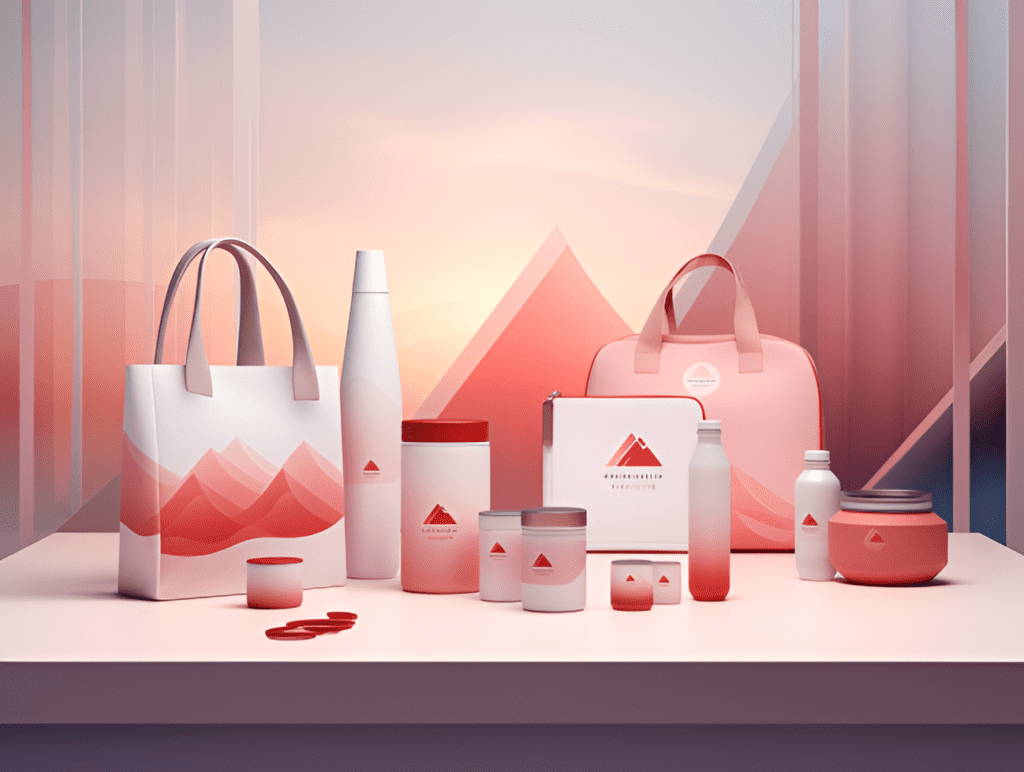When navigating the online world, small business owners may unknowingly make common design mistakes that can impact their brand image and communication. Here are some prevalent pitfalls:
Inconsistent Branding
Consistency is more than just a design principle; it’s the bedrock upon which brand recognition and loyalty are built. When branding elements vary haphazardly, it’s akin to playing a discordant tune in the symphony of your brand. Here’s why it matters:
Confusion:
Picture this: your audience is your orchestra, and your branding elements are the notes. When colors, fonts, and styles change abruptly, it’s like switching from a soothing melody to an abrupt jarring note. This inconsistency introduces confusion. Your audience, trying to resonate with your brand’s tune, may find it challenging to follow along, leading to a disconnect.
Weakened Emotional Connection:
Brands thrive on emotional connections. Consistent visuals create a sense of familiarity and reliability. When these visuals fluctuate, the emotional thread weakens. It’s like trying to build a relationship with someone who keeps changing their appearance – the connection becomes uncertain, and trust is eroded.
Lost Opportunity for Recall:
The human brain is wired to recognize patterns and recall familiar elements. Consistent branding creates a visual pattern that becomes ingrained in the minds of your audience. Inconsistency disrupts this pattern, making it harder for your brand to be remembered amidst the sea of competing visual stimuli.
Impact on Professionalism and Trust:
Imagine visiting a website where each page feels like a different chapter from unrelated books. It doesn’t instill confidence. Consistent branding, on the other hand, communicates professionalism. It tells your audience that you pay attention to detail, reinforcing their trust in your brand.
What you Can Do
Develop a comprehensive brand style guide outlining consistent usage of colours, fonts, and visual elements. This ensures all marketing materials align with the brand identity, fostering recognition and trust.

Brand Identity Design
$79
Establish trust in your brand with a solid brand identity that accurately represents your business’s unique style across all platforms.
Overcrowded Designs
Overcrowded designs, where information competes for attention, present a myriad of challenges that can significantly impact the effectiveness of your visual communication. Here’s why it matters:
Overwhelms the Visual Landscape:
Imagine entering a room where every inch is covered with intricate patterns, colours, and textures. It becomes overwhelming, and the eye struggles to find a focal point. Similarly, overcrowded designs overwhelm the visual landscape, making it challenging for viewers to navigate and prioritize information.
Furthermore, human attention is a precious resource, and overcrowded designs demand more attention than the average viewer can spare. It becomes a cognitive challenge to absorb information effectively when faced with an abundance of details vying for attention.
Dilutes the Main Message:
Effective design communicates a message clearly and facilitates easy readability. Overcrowded designs compromise this clarity. Fonts may clash, text becomes too small to read comfortably, and the overall visual hierarchy is disrupted.
Every design has a primary message or call-to-action. When that message is surrounded by a sea of competing elements, it loses its prominence. The main message gets diluted in the visual noise, and viewers may miss the intended focus.
Lacks Visual Breathing Space:
Just as a well-designed room benefits from open spaces that allow the eye to rest, a well-designed graphic needs breathing space. Overcrowded designs lack this visual breathing space, creating a sense of claustrophobia and reducing the overall visual appeal.
Aesthetic appeal is a delicate balance between form and function. Overcrowded designs tilt this balance, leaning towards chaos rather than cohesion. The result is a design that may repel rather than attract your audience.
What you Can Do
Prioritize simplicity in design. Avoid overcrowding with excessive information. Clearly define the primary message and use visual elements strategically to support it without overwhelming the audience.
Further Reading:
Low-Quality Images
When low-quality images find their way into design, they can have a detrimental impact on the overall professionalism and perception of your brand. Here’s why it matters:
Undermines Professionalism:
Just as a blurry photograph can diminish the quality of a printed picture, low-quality images undermine the professionalism of a design. The visual presentation is a reflection of the brand’s commitment to quality, and low-resolution visuals send a conflicting message.
Compromises Brand Consistency:
Consistency in visual elements is a key aspect of brand identity. Low-quality images disrupt this consistency. A brand that appears polished on one platform but pixelated on another erodes the seamless brand experience, causing confusion among the audience.
Diminishes Visual Impact:
High-quality images have an emotional impact; they draw the viewer in, creating a connection. Low-quality visuals lack this impact. They may fail to evoke the desired emotions or responses, diminishing the overall effectiveness of the design.
What you Can Do
Utilize high-quality images that align with the brand aesthetic. Avoid pixelation or blurriness, as it can undermine the perceived professionalism of the business.






